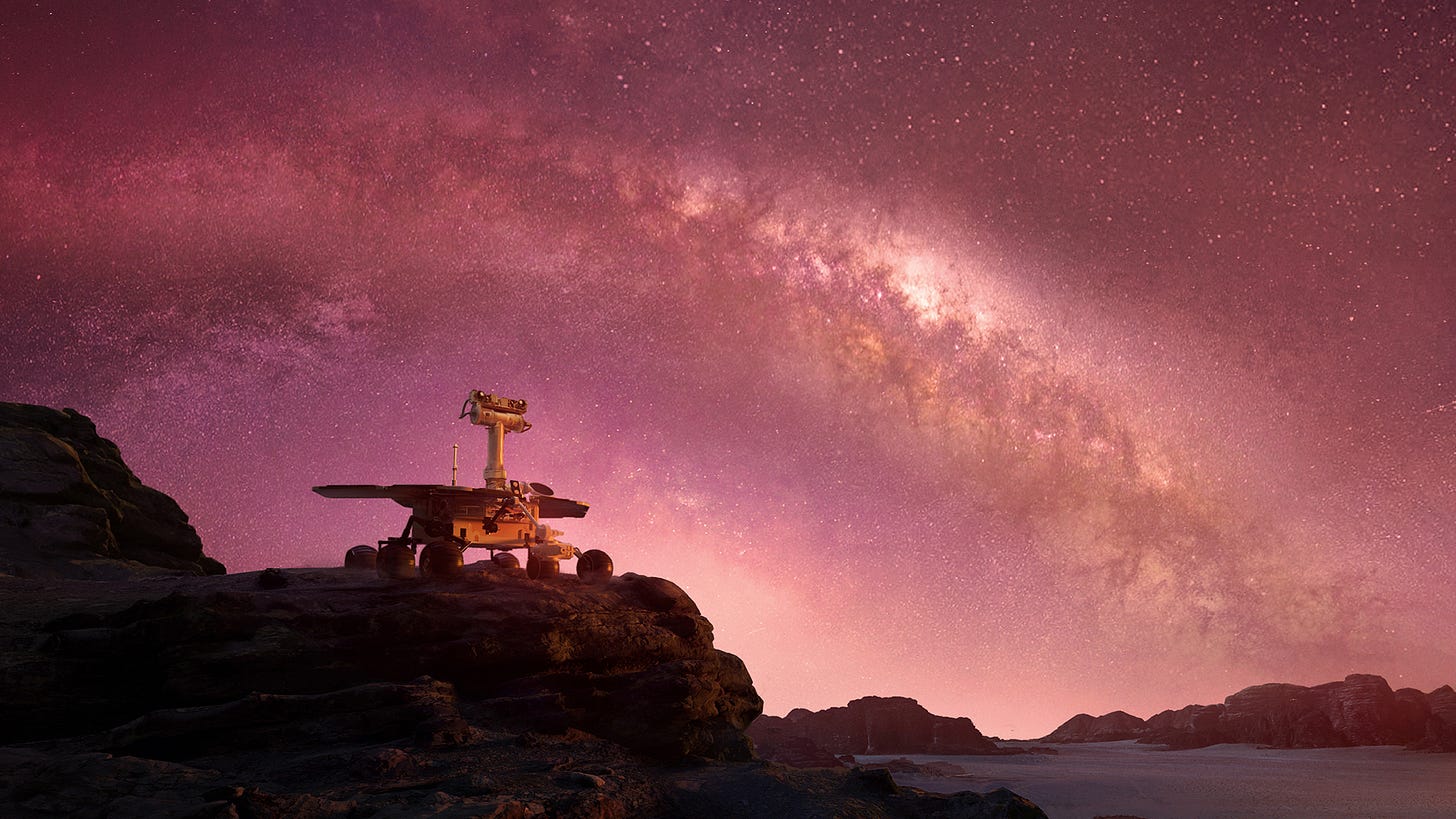Good Night Oppy
An exquisitely human documentary about the twin rovers who explored Mars far beyond the limits and dreams of the scientists who created them -- and look upon them as children.
You wouldn’t think there would be a lot of thrills in a documentary about space exploration rovers, a movie that is basically 105 minutes of a bunch of geeky scientists gushing about the robots they built and sent to Mars.
But what makes “'Good Night Oppy” such a standout is its frank emotionalism. The NASA nerds launched a pair of identical rovers, Spirit and Opportunity, to Mars in 2003 and very much regarded them as their children. They even refer to them as twins, and as patient caregivers do the best they can to help them along as they age from sprightly newborns to decrepit oldsters, barely able to move and growing forgetful.
Sent to explore geological formations of Mars — especially the search for the evidence of the past presence of water indicating the potential for life — for 90 days, they would up outlasting their mission by many orders of magnitude.
Spirit lasted for seven years. Opportunity, which came to be known as the “lucky” rover affectionately known as Oppy, continued on for an astonishing 15, lasting until 2019.
Directed by Ryan White and narrated by Angela Bassett, “Good Night Oppy” unfolds as a sort of life journal. There’s plenty of archival footage of the scientists on Earth, from mission launch to its end, and we get to see them laugh, cry, suffer setback and age and change themselves. One high school student who was present for the launch went on to become one of the mission engineers.
(Though I may be mixing them the roles. The movie explains that the scientists dream up ideas, and the engineers say what is or isn’t possible.)
This is augmented by actual footage from the rovers, of course, but also very polished computer-generated animation of what things might have looked like if we were standing on Mars witnessing their journey. It looks completely naturalistic and at first you might question how they got this amazing live footage of Oppy and Spirit.
The colors on Mars are breathtaking, mixes of red and brown and purple and a few more hues in between. Rather than being a dead rock, we learn that it’s a planet always in motion, covered by dust devils. Sometimes there are storms that will last for months, halting the rovers’ exploration as they hunker down and power down.
That dust, as the foresightful scientists knew, would prove the biggest challenge to the mission. They calculated the rovers would only last 90s sols (Mars days, slightly longer than Earth’s) because the rust-colored dust would eventually cover the solar panels and sap its energy.
Those dust devils turned out to be a godsend, acting as sweepers that would occasionally clear the rovers’ receptors and make life possible for a few more weeks. As time goes on, though, that dust began to embed itself into the wiring and joints of Oppy and her sister (both are referred to as female), rendering them “arthritic,” in the parlance of the scientists.
It’s not surprising Oppy and Spirit were anthropomorphized by their creators. With six wheels, an arm-like probe for drilling into rocks, a flat deck of solar panels and a column filled with cameras and sensors that resembles a head, they don’t look human but certainly like something humans would create.
Someone actually refers to them as “our Johnny 5s,” referencing the robot in the “Short Circuit” movies, and there is indeed a resemblance, along with not a little smattering of “WALL·E” — although one wonders if that 2008 animated film from Pixar borrowed from the Mars rovers.
There’s too many scientists featured to name them all, but a few stand out: Steve Squires as the lead engineer, resident cheerleader and spiritual father of the younger scientists; Jennifer Trosper, mission manager who very much sees the rovers as her children; Koybie Boykins, an exuberant engineer who raised his own family over the course of the mission; and Rob Manning, lead systems engineer who acts as a sort of kindly Woz figure, pushing against the Steve Jobs types.
A few tidbits of details I loved: because manned missions were accompanied by the scientists on earth playing a “wake-up song” every morning to help the astronauts stir from slumber, the rover leaders do the same. The duty of choosing the song is passed around, and sometimes the tunes they pick pack an emotional wallop.
Or that they have levels of commands. There’s the “soft” shutdown command, suggesting Oppy take a rest, though she has enough A.I. automation to override these. Then there’s the “shutdown dammit” command, a drop-everything-and-do-what-I-say scenario. (Even then, she doesn’t always listen right away.)
For her 5,000 mission day celebration, the scientists used her various cameras to take a selfie picture, stitching together the different angle views to form their first look at their creation since its launch.
The rovers range far beyond their initial scope, examining craters, bedrock outcroppings and other geologically interesting places. Because there’s a delay of a few minutes between commands and execution owing to the distance from the Earth, the drivers have to be very cautious and methodical; it might take two years to travel from one location to the next.
The human team experiences their own life changes, often mirroring or commenting upon those of the rovers. One gives birth to twins, just like their metal ones. When Oppy starts dumping her short-term memory and has to be forced to “remember” where she’s been every day, it’s a poignant reminder of another engineer’s grandmother battling Alzheimer’s.
“Good Night Oppy” may be the story of a couple of metal contraptions, but it’s really an exquisitely human story about where we can go, and how these rovers are just an extension of our own desire to roam.





